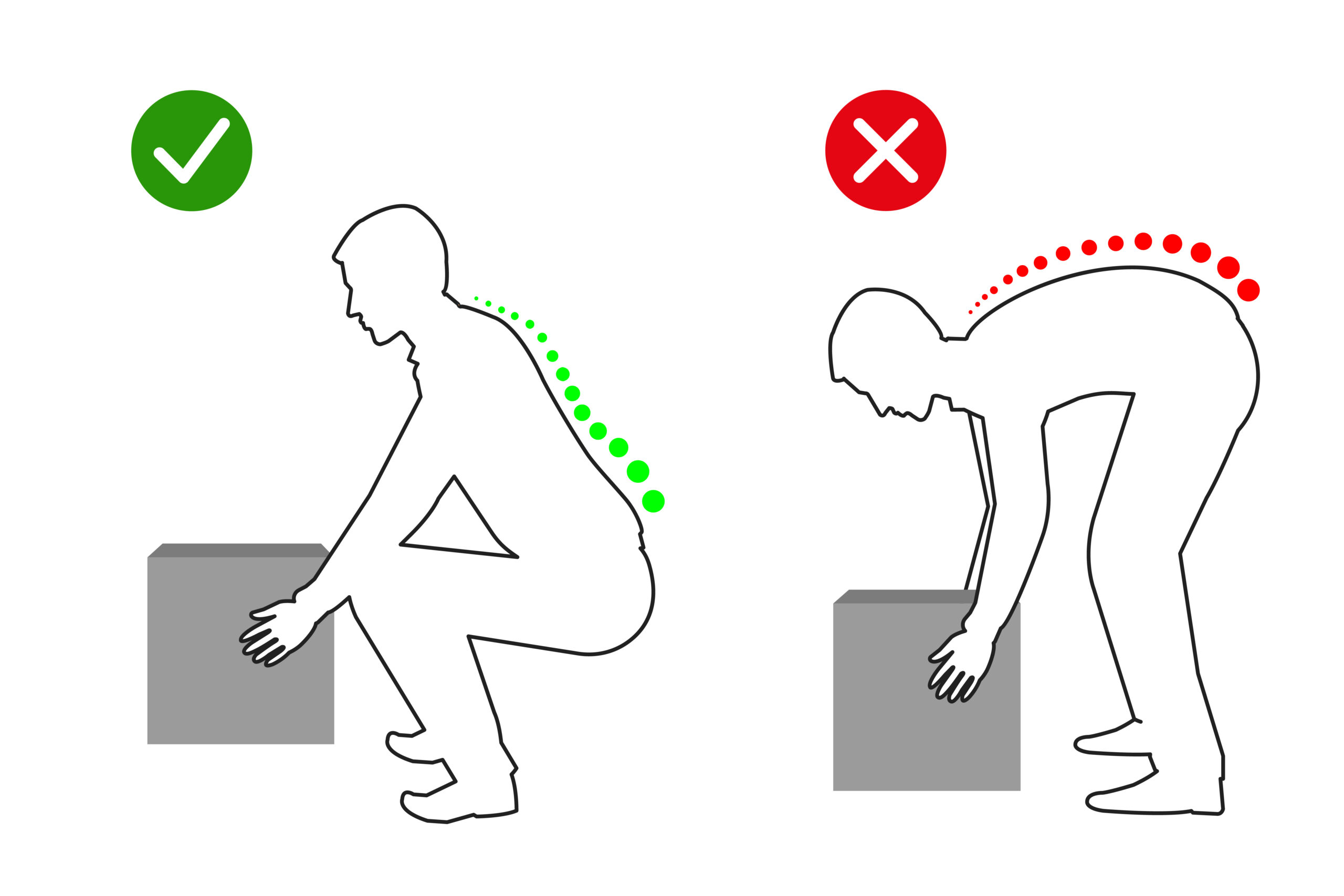Sciatica Pain Relief is Within Reach: Here’s How
An injury or irritation to the sciatic nerve causes sciatica, which starts in the butt and gluteal muscles and deserves expert sciatica pain relief treatment. There’s no true sciatic nerve injury that causes sciatica, but it’s commonly used to describe any lower back or leg pain that starts in the lower back. This lower back pain is caused by a nerve injury, causing irritation, inflammation, pinching, or compression.
The sciatic nerve is the longest in the body. Five nerves come from the lower back called the lumbar spine, and three from the sacrum. Five separate nerve roots actually form two sciatic nerves. Two sciatic nerves run down one leg, from your hips to your buttocks, ending just below the knee on each side. Other nerves branch off the sciatic nerve, which then runs down your leg and into your feet.
Sciatica Pain Relief: First, How Bad is Your Discomfort?
Basically, sciatica is pain anywhere along the sciatic nerve path — from the lower back, through the hips, buttocks, and down into the legs, which are all areas you should be seeking sciatica pain relief through proper treatment. In addition to muscle weakness and numbness in your leg, you could feel tingling pins-and-needles in your foot and toes too.
While irritation, inflammation, pinching or compression of a nerve can cause sciatica pain, most people get it because of a herniated or slipped disk. Self-care and time usually cure sciatica, but that’s not always the case for many patients.
The misery and agony from sciatica is described differently depending on the cause, which means relief from the pain will be discovered differently as well. The pain can be sharp, shooting, or jolting for some people. Burning, jabbing, or stabbing are other ways to describe this pain. Oftentimes, there’s no telling if the pain is constant or if it comes and goes. Leg pain tends to be worse than lower back pain. Whenever you stand up or sit for long periods of time or twist your upper body, the pain may get worse. Sudden movements, like coughing or sneezing, often worsen pain.
Lifestyle Changes, Cures, and Sciatica Pain Relief
Some causes of sciatica aren’t preventable, such as degenerative disk disease, sciatica during pregnancy, and accidental falls — but sciatica pain relief is still worth the effort. Take these steps to protect your back and reduce your risk of sciatica, even though it’s not possible to prevent all cases:
- Lose weight: Extra weight and poor diet cause inflammation and pain. Check out various healthy diets or lifestyle-change diets if you want to lose weight. As you get closer to your ideal weight, your spine will be less strained.
- Take good care of your posture: While sitting, standing, lifting objects, and sleeping, follow good posture techniques. Having pain can be a sign you’re not aligned correctly. Make sure you’re sitting right if you’re sore or stiff.
- You should choose low-impact exercises like swimming, walking, yoga, or Tai Chi to avoid hurting your back.
- Keeping stairs and walkways clear of clutter can keep you from falling. Wear shoes that fit and wear shoes that fit well. Don’t forget to put grab bars in bathrooms and stair rails on stairways.
- Get regular exercise: Stretching keeps your joints flexible, and strengthening your core gives you a strong lower back and abdomen. Your back is supported by these muscles. Also, don’t sit for too long.
- Stop smoking: Nicotine reduces blood flow to bones. Spine and disk problems result when the spine and disks weaken, putting more stress on them.
Relief from the pain starts with lifestyle changes, which ultimately lead to some sort of cure.
Connection Between Risk, Complication, and Sciatica Pain Relief
While sciatica pain relief is within grasp for patients who are suffering, it all comes down to tailoring changes within your daily choices, habits, and environment. Sciatica is more likely if you:
- Sustain an injury. You’re more likely to get sciatica if you damage your lower back or spine.
- Have a physical job. Heavy lifting or long sitting times often lead to low back problems.
- Have too much weight. As you gain weight, your back muscles have to work harder. It can cause back strains, back pains, and other problems.
- Exercise without proper posture. When you lift weights or do other strength exercises, even if you’re fit and active, you can still get sciatica if you don’t follow proper body form. This is actually one of the biggest reasons, which means your sciatica pain relief efforts should make proper posture with exercise a priority.

- Don’t have a strong core. Back and abdominal muscles make up your core. You’ll have more support for your lower back if you have a strong core.
- Are a diabetic. Nerve damage increases your chances of sciatica with diabetes.
- Tobacco smoke damages spinal tissue, weakens bones, and wears down vertebral disks faster; therefore, nicotine can cause serious problems.
- Natural aging wears down your spine’s bone tissue and disks. The changes in bone, disks, and ligaments that naturally occur with aging can put your nerves at risk.
- Are a victim of osteoarthritis. The condition can damage your spine and hurt your nerves.
- Live a sedentary lifestyle. When you’re sitting all the time without exercising and keeping your muscles flexible, you’re more likely to get sciatica.
Pain alleviation isn’t so difficult when you commit to following some simple ground rules.
Why Do You Get Sciatica? It’s Complicated…
There are a lot of reasons why you can get sciatica, which means there are even more reasons why sciatica pain relief comes by utilizing a variety of tools, resources, and good habits. Reasons for experiencing sciatica include:
- One vertebra slips out of position and narrows the opening through which the nerve exits, called spondylolisthesis. The risk of sciatic nerve pinching rises when the spine extends.
- A condition known as “osteoarthritis” is caused by bone spurs, which are jagged edges of bone found in aging spines.
- A herniated or slipped disk that pressures a nerve root. This usually causes sciatica. The disks between the vertebrae cushion each other. Herniation occurs when the gel-like center of a disk bulges out of a weakness in its outer wall from pressure from vertebrae. This squeezes your sciatic nerve.
- Stenosis is the narrowing of the spinal canal. There is less space for the spinal cord and nerves due to this narrowing.
- An encroaching tumor in the lumbar spinal canal.
- Natural wear and tear degenerates disks between vertebrae. Disk wear shortens the height of the nerve passageways and creates spinal stenosis. In turn, this pinches the sciatic nerve roots.
- There is a condition known as “piriformis syndrome” that occurs when the piriformis muscle, located deep in the buttocks, tighten or spasm. Sciatic nerves become pressured and irritated.
- There’s a rare but serious condition called “cauda equina syndrome,” which affects the bundle of nerves at the end of the spinal cord. A common symptom is pain down the leg, numbness around the anus, and bowel and bladder problems.
A long-term reprieve from your pain — if not perpetual — is the goal of any sciatica pain relief treatment plan.
Can You Self-Care at Home Before Seeing a Doctor?
Since different pains have different types, intensities, and causes, there’s no one-size-fits-all approach when it comes to sciatica pain relief. Depending on the patient, a more aggressive approach may be tried first. The general rule is: If self-care treatments, like ice, heat, stretching, over-the-counter medicines, haven’t worked for you after six weeks, then it’s time to see a doctor.
You can also try the following for relief from the pain:
- Treatment for physical problems. In physical therapy, you’re trying to find exercises that reduce sciatica symptoms by reducing pressure on nerves. You should do stretching exercises and aerobic exercises (like walking, swimming, water aerobics). Physical therapists can help you customize your routine to strengthen your back, abdomen, and legs.
- Therapeutic alternatives. The use of alternative therapies is rising, and they treat and manage all kinds of pain. Yoga or acupuncture are some other ways to get rid of sciatic pain. Massages often help muscle spasms that accompany sciatica. The use of biofeedback can help manage pain and relieve stress.
- Drugs or prescriptions. For muscle spasms, your doctor may prescribe muscle relaxants. If the pain is bad, you can also try tricyclic antidepressants and anti-seizure drugs. Pain medicines might be a part of your treatment plan early on, depending on how bad you feel.
- Injections in the spine. A corticosteroid injection can help reduce swelling and pain around the affected nerve roots. Given under local anesthesia, injections usually last three months. Get your healthcare provider’s advice on how many injections you can receive and whether there are any risks.
Ultimately, with so many sciatica pain relief options available, one will be better suited to your personal circumstance than others.
Wellness and Pain
After an easy 10-minute ultrasound, we can diagnose and treat you using proper sciatica pain relief techniques. After which, you can live a healthier, more active life. Aside from ultrasound, electromyography (EMG), and nerve conduction studies, Wellness and Pain has state-of-the-art testing equipment. Plus, we offer muscle injections to help with recovery and pain.
You’re in good hands with Wellness and Pain. Take advantage of your ultrasound today (We Accept Most Insurances and most unions).











